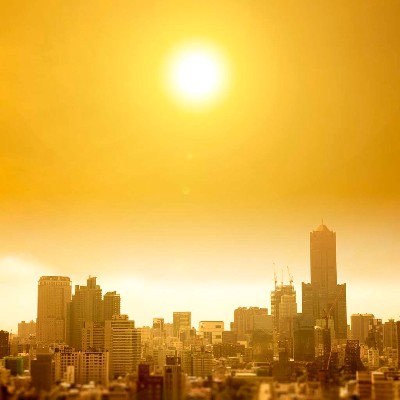
Things are heating up
Did you realize that June 2021 was the hottest month on record??? Reported through multiple sources – that is some headline!
Heat advisories have people staying indoors, but their buildings are becoming increasingly uncomfortable and energy costs are rising. The question on everyone’s mind is: How can property owners and managers combat this severe heat wave?
Window film.
Don’t just take our word for it (quick DOE link here). Window film does a remarkable job at reducing interior temperatures and improving comfort, so much that it can be felt instantly. Whether dark and traditional or light and modern, window film can reduce solar heat gain, interior temperatures and HVAC usage, improving comfort and saving a boatload of money.
Hearing it from a vendor is one thing, but how about some objective data?
We have installed thousands of residential and commercial projects across the Northeast, and in our hometown of New York City, there is no greater proving ground than a Class A skyscraper. New York City skyscrapers are known energy hogs, with expansive glass facades, breathtaking views (and sun exposure), high KWH rates and frequent trouble controlling peak temperatures.
Crunching the Numbers
Let’s walk through a real-life case study together:
- Large class A skyscraper with single-paned curtainwall facade
- Frequent issues controlling climate, either too hot or too cold
- Layr installed 3M Thinsulate 75 window film to improve performance while maintaining clear a virtually clear aesthetic profile
- Thinsulate 75 is an advanced window film that reduces solar heat gain and improves winter insulation, all while keeping the view completely unchanged
- Once installed, the film is invisible, but the effects can be felt immediately, but for anyone not in front of the film, we install USB temp loggers 2 feet back from the HVAC convector (where a desk might be). We do this on filmed and un-filmed floors, and at the same window location so that we are comparing apples and apples
- Heat rises, so to give the benefit of the doubt, we install film on say, the 50th floor and leave the 45th floor as a control window without any treatment
- We set up the temp logger to take readings every 15 minutes, leave the loggers in place for anywhere from 3 weeks through 2 months, and then analyze the data
- During the month of May, we noticed an average temperature differential of ~4 degrees – modest for a few reasons. This particular building does not have tremendous heat / glare issues, and it was not particularly hot this month
- However, as the temperature rose with summer, we started to see some interesting patterns emerge
- 12-4 pm for the South-facing windows, once the temperature crept above 80 degrees, the filmed floors were 10-15 degrees cooler. For hot days with peak HVAC load, this is a considerable benefit, that helps to reduce carbon demand, prolong HVAC equipment usage and improve tenant comfort
Want to learn more – cost, installation process, rebates, LEED points?
Drop us a line at [email protected] or better yet, come visit our showroom in Manhattan.
